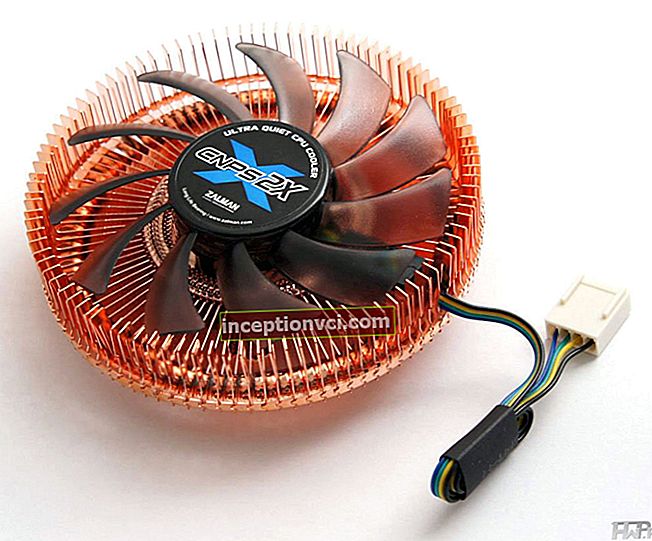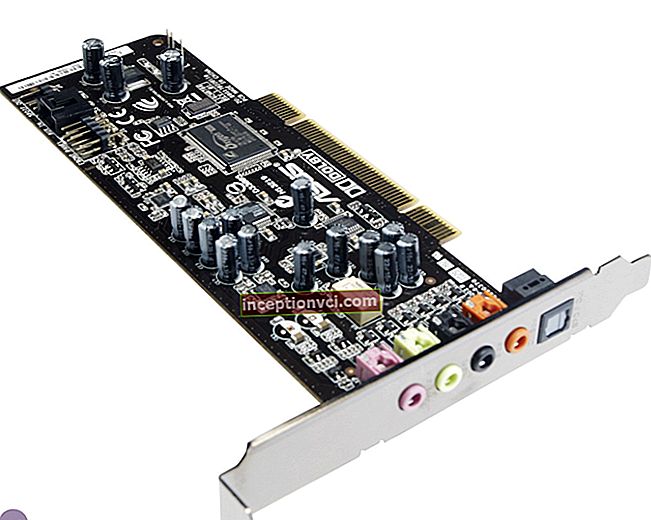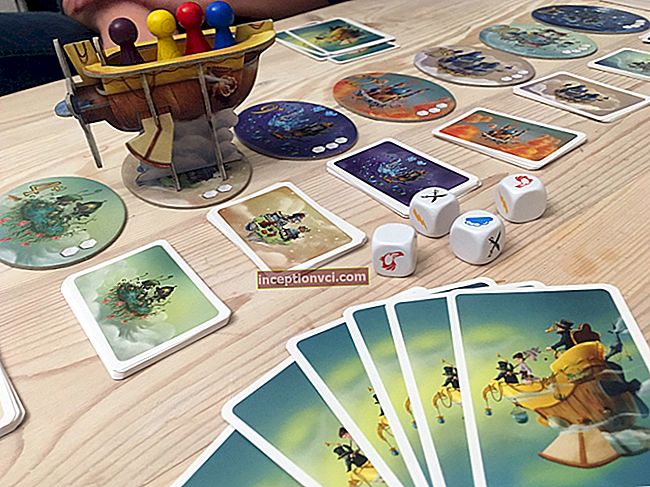Of course, you can get by with an "average" rod, but with such fishing you will not be able to get real pleasure from fishing. If you suddenly catch trout or grayling in a small river, then go fishing for deep pike, then, in this case, you need to have not one, but several rods. As you become familiar with spinning fishing, you will not be able to resist collecting rods. After all, each new "stick" will bring its own incomparable sensations, both from playing the fish, and, simply, from the very casting of the rod.
The rod plays the most important role when casting, as well as when pulling out fish. Strong lines, and, separately, braided lines, plus reels, where there is a friction brake, which, in turn, deflects the line with a strong jerk of the fish, which take on the main load. One of the main tasks of the rod is to mitigate the jerk of the fish. Considering the fact that the strikes of the fish when playing are quite sharp, this can damage the mechanism of the reel or tear the forest, in which case the friction brake on cheap reels contains unusually strong inertia. One by one, a sharp jerk of the fish can ruin the tackle, but also bring the fish to the exit, while tearing the lip. Based on this, the rod has three main tasks:
1. Casting the bait at a greater distance;
2. Reducing the prevention of excessive loads on the line and reel;
3.Increase in the smoothness of playing fish.
The question arises: what is the difference between spinning rods? To answer this question, you should familiarize yourself with the world classification of fishing with a spinning rod.
In the modern world, there are several basic classifications of fishing. Many firms and fishing clubs offer their own classification designs. We will pay attention to the classification most widespread in our state and most often found in the literature.
Spinning fishing is divided into:
1. Ultralight class is UL (ultralight);
2. The middle class is M (medium);
3. Heavy class is H (heavy).
Let's take a closer look at each type of fishing.
UL is the most popular type of fishing these days. Tackle for this class is used for fishing small fish - grayling, perch, trout, chub, coastal pike. This class is characterized by a thin fishing line (0.12-0.2mm.), Mainly short rods (1.5-2.1m.), As well as light lures, the weight of which does not exceed 10 grams (almost all spinners, plastic lures with light jig heads, small spoons that hesitates, wobblers).
M - this class of fishing is especially popular in the northern regions, in particular, and in any areas with a low population level, where the pressure on water bodies is small, under such conditions the fish can grow to a very impressive size. In such places, the main prey are large pikes and perches, salmon and sea taimen. This class is characterized by a thicker fishing line (0.25-0.35mm.), The weight of the bait can reach 40 grams, this, first of all, this is due to the fact that the depth of fishing, as well as the casting distance, increase in scale. Rod lengths are usually 2.4–3.3 meters.
H - the heaviest of the fishing classes presented.It is used for catching catfish, sea taimen, cod and other extra-large fish. The maximum strength is necessary for rods of this class. The length of the rods must be more than 2.7 meters, the weight of the cast bait must be at least 30 grams.
Very often, another class is distinguished - super-heavy fishing - sea trolling. In this class, hand-thick rods are used, there are rings on the rollers, and the multiplier reel, which is used for this fishing, would be more correctly called a winch. Thorough possession of this tackle requires unusually great skill.
Now, having dealt with the fishing classes, you need to know what rods are. Absolutely all spinning rods are grouped according to two parameters - action and power, as well as by material, manufacturing method and length.
Almost all manufacturers produce their rods in standard lengths. Previously, the length of rods was indicated in feet (30cm.), Since then rods are produced with a difference in length of 1 foot. Now, the lengths of spinning rods are produced in the range from 150 to 360 centimeters. The most successful nowadays are rods with a length of 210cm.
When choosing the length of the rod, there are general rules: the larger the fish, the longer the rod and, accordingly, the more obstacles there is when casting, the shorter the rod. When fishing from the shore, long distance casting is very important, you must use two-handed long rods (270-330cm.)
The power of the rod is determined by the inscription on it. It is indicated in grams, or rather, in the weight of the bait being cast. For example: "10 - 30g." By power, rods are divided into four classes:
1 to 10 grams;
2 10 - 30 grams;
3 30 - 60 grams;
4 over 60 grams;
The action of the rod is the most important parameter, since the casting of the bait and the direct nature of the fish playing depend on this parameter. The type of bend characterizes the action of the rod under load. Several classifications also exist in order. Let's take the American classification as an example:
1. EXTRA FAST (EF) (very fast) - the greatest rod bend is in the upper quarter of the whip;
2. FAST (F) - rod bend is in the upper third of the whip;
3. MODERATE (M) (middle) - the rod end is in the upper half of the whip;
4. SLOW (S) - bends the rod along its entire length.
For the manufacture of rods, a material such as carbon fiber (coal, carbon, graphite - the same) or fiberglass is used, their mixture (composition) is also possible. Often, a variety of fibers are added to expensive models (for example: Kevlar fibers), this is done for additional rigidity and strength, and many other properties. Fiberglass rods are very heavy and flexible and have a very low modulus of elasticity. Coal sticks are relatively light and tough. Composite rods are something neutral.
Nowadays, the market is mostly represented by composite or graphite rods, and pure fiberglass is extremely rare - only in cheap models.
Graphite materials are of various types. Two graphite rods that are the same length may differ in action, weight and power. There are many grades of graphite and their generally accepted classification does not exist. Here are just a few examples of the most acceptable grades of carbon fiber: XT30, XT60, XT100, SC 42, IM 700, hipron, SC 33.
Fiberglass rods, as a rule, are too heavy and soft, but their price is much lower. On short rods (1.5–1.6 m.), Their weight is practically not perceptible, and the difference in price is quite decent. The ring is another matter. After all, in fact, the fact is that cheap rings are placed on inexpensive rods, but we will talk about rings later. If you are a beginner spinning player, then you probably have to fish in small rivers, then it will be more useful to start with "glass".
Composite rods are in great demand in the fishing market, there are quite an impressive number of them.If the rod has the inscription "carbon" and the price is low enough, then this is, most often, the "composite". More honest manufacturers make an inscription on their products, the material from which the product is made - this is any phrase with the word "composite". Prices for such goods are quite acceptable, and their quality is at a fairly high level. Such rods can be safely called universal. Experts recommend purchasing the first rod just a composite one. At the moment, there is no experience in handling delicate storage, and, directly, in the use of charcoal sticks, in this case, you can use a composite. You get more pleasure by switching to high quality coal in the future.
Quality rods have a clear lacquer finish. The structure of the material is usually visible through the coating. The color of such rods depends on the shade of the translucent varnish.
Cheaper models are produced with an opaque finish. This also applies to fiberglass rods.
Spinning rods are telescopic and plug-in, and plug-in rods are, in turn, divided into two types: with an inner and outer nozzle of the upper whip.
Interestingly, telescopic spinning rods are unusually convenient for transporting them, but, unfortunately, the quality of such rods leaves much to be desired. Loss of length at the joint (10cm * 5-6 joints = 50cm) of the rod becomes heavier with the same length. The structure of this type of spinning rod is only fast, since the lower knees hardly work, as a result of which the bend turns out to be uneven. The rings on such rods are not installed where it is necessary to do this, but where it becomes possible - at the ends of the knees.
Plug rods are a more professional tackle. External or internal joint - this depends on the action of the rod and, as a rule, for a fast action, the upper one is inserted into the lower whip. The rings on the plug-in whips are attached in special places.
With the advent of various types of ultra-strong fibers, the topic of the quality of the guide rings becomes even more relevant. In particular, the life of the scaffold depends on the quality of the ring.
A good quality ring should be made of a hard material, it should be well polished, lightweight and durable. The smoothness of the rings and their high hardness reduce friction to a minimum, due to which, the service life of the forest, the ring itself, and also increases the casting distance, increases.
Nowadays, almost all rings are made from a metal holder, an insert made of a hard material and, in a few cases, a plastic spacer between the insert and the holder. In expensive models, a hard insert is rigidly attached to the holder, and the gasket is not used. The time of wire rings (sometimes still used in domestic spinning rods) has passed. For solid inserts, materials can be different: sitalocement, ceramics or compounds of several metals (aluminum oxide, rings are dark brown). Aluminum oxide rings are most commonly found on good quality spinning rods.
The lightness of the rings determines the order of the rings. Heavy-weight rings negatively affect the action of the spinning rod, making the action "sausage", that is, if, holding the handle, look at the spinning rod lengthwise, it will look just like a sausage. A similar action is also observed in low-quality fiberglass rods.
The strength of the rings is an important factor, especially when the load on the rings is quite high, in particular on heavy fishing spinning rods.
Particular attention should be paid to the "tulip". Tulip refers to the last ring on the whip. In the "tulip", the solid insert must have such a shape as to cover the plastic gasket and the metal holder itself from the field of action of the scaffold.
The legs on which the ring is attached to the rod can be one-sided or double-sided. The first ones apply to the first two power classes of spinning rods, and the double-sided ones apply to all the rest. In the heaviest power class for trolling, roller rings are used. Ideally, the size and arrangement of the rings should be such that they form a cone with a base at the spool cheeks (used for non-inertia reels) and the top of which is at the tulip. Despite this, such an arrangement of rings is found only on homemade spinning rods. Although the casting range is increased with this type of rings, with all this, the weight of the rings affects the action of the rod. Also, such rings interfere with the transportation of the rods. Therefore, on branded high-quality "sticks" rings are installed in smaller sizes.
In order not to confuse a fly pole with a spinning pole, they can be easily distinguished by their rings. With a fly rod, the rings look like a slightly twisted spiral of wire, the ends attached directly to the rod.
To all this, rods have been developed without rings at all. The line runs inside the rod on a well-sanded surface made of special material. This type of rod becomes more powerful due to such a factor as an even distribution of the load, but the casting distance is lost. There are not very many rods of this type on the market so far, therefore, we will not dwell on them in detail.
Since the rod handle is an object that you hold onto during the entire fishing time, a few words should be given to this.
On modern types of rods, there are three types of handle covers: cork, foam rubber and leather. Cork is considered the most successful material, since it is lightweight, pleasant to the touch, besides, it warms the hand in cold weather, because of this it is used on expensive premium rods.
On many models of spinning rods, they began to screw on the handle, which is covered with cork by 60-80%. Such handles make it convenient to catch while standing, and when fishing while sitting or, as an option, in a boat, such a handle is not very convenient, since it is too long. In general, spinning rods exist as one- and two-handed. There are also intermediate "sticks" - they are called lorries. One-handed handles, as a rule, make spinning rods up to 210cm long. The length of the handle that goes after the reel seat does not exceed 20cm. Two-handed rods are used, as a rule, for fishing from the shore, they have a handle, up to 30cm long. Lorries are very convenient for fishing from a rubber boat, when long-distance casting is simply necessary. In this case, the handle of a two-handed spinning rod constantly touches the knees, and the handle of a one-and-a-half spinning rod does not interfere and allows more powerful casts.
It is important for the reel seat that it is comfortable and firmly wrapped around the reel. The pressure rings, which are sometimes put in place of the reel seat in spinning rods, are not used (in particular, this rule exists on float rods - at competitions). The clamping rings do not provide the necessary strength either, which allow you to change the location of the coil attachment "by hand".
As a rule, two types of reel seats are used: slightly recessed into the handle, where the clamping nut is placed in front, and also standard ones, where the clamping nut is placed in the back. In practice, a special trigger is also made on the reel seat, this is done for baitcasting reels.
Now that you have completely decided on the choice, you need to study the question of what details you need to pay attention to when buying a rod. There are a lot of low-quality cheap goods on the rod market, a lot of fakes and defects.
We will give a number of operations that are extremely necessary to be performed right at the store counter:
1. Assemble the spinning rod. Rock it from side to side. Follow this with a few strokes of the rod.There should be no extraneous sounds (creaking, knocking, clicking);
2. Inspect the rings carefully. All rings must be firmly seated, the sleeve must be stationary, i.e. should not scroll, see that there are no cracks and delamination in the adhesive varnish and resin;
3. special attention should be paid to the "tulip". It should not scroll, but should be rigidly fixed;
4. Then, disassemble the spinning rod and take and inspect the whip. Holding the base with one hand, bend it slightly, and with the other hand between the "tulip" and the last ring. Roll the whip with your fingers. It is necessary that it spins evenly. There should be no stiffness and ribs;
5. If you are not an expert in spinning, and cannot immediately determine whether this "stick" is worth the money the seller asks for it, ie cannot determine its level and quality, pay due attention to the packaging. Low-end rods are sealed in a plastic wrap, closer to the middle class - a fabric cover, high-quality velvet, and if you go further, elite rods, in most cases, have a plastic tube. There are exceptions to this rule, but their number is minimal.
6. Finally, ask the seller what the rod warranty is. The point is not even that it will fail, but that the guarantee is given for a good product, and for an elite product, as a rule, a lifetime warranty is given!









